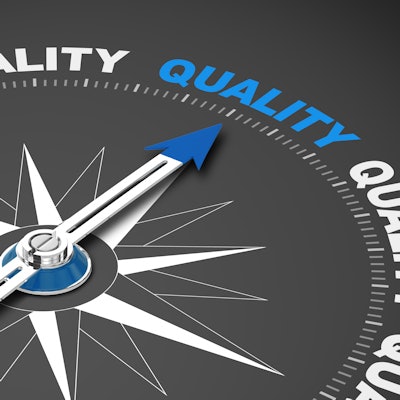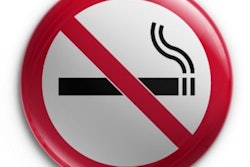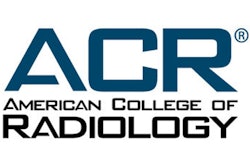
Participation in radiology data registries can help your practice measure performance, identify opportunities for improvement, and meet quality reporting requirements. Data registries provide you with a national benchmark of best practices for an array of radiology procedures and care processes.
As a quality improvement initiative, registry participation allows you to track your performance against specific quality measures over time and measure your progress against your goals. Equally important, registry participation can help you demonstrate your quality to patients and referring physicians alike.
Benchmark against best practices
Registry participants receive access to feedback on objective measures regarding the quality of facility processes and outcomes in comparison to similar facilities nationwide. Regular benchmarking reports allow facilities to assess their performance at the facility, group, and physician levels.
By evaluating yourself against your peers -- whether locally, regionally, or nationally -- you can identify opportunities to improve your quality of patient care, measure your progress, and enhance your strengths.
How it works
There are a variety of registries available from the American College of Radiology (ACR), and they vary in the types of data they hold. Practices contribute a standardized set of information based on each database's requirements -- whether it's radiation dose, turnaround time, screening mammography audit information, or other data.
The registry then aggregates the data and provides comparative feedback based on participating facilities and practices around the country. The benchmarking information enables quality and practice leaders to make data-driven decisions to improve their practices and optimize patient care.
Here's how it works:
- Facility and physicians submit data
- Facility receives periodic national benchmarking reports
- Facility analyzes results
- Facility develops and implements improvement plan
Use registries for quality reporting
In recent years, satisfactory participation in a qualified clinical data registry (QCDR) has allowed eligible professionals to meet new Medicare Quality Payment Program (QPP) reporting requirements and optimize reimbursement. The ACR National Radiology Data Registry (NRDR), now in its tenth year, has been approved as a QCDR by the U.S. Centers for Medicare and Medicaid Services (CMS) since 2014.
Under CMS regulations, eligible clinicians can meet Merit-Based Incentive Payment System (MIPS) quality reporting requirements by participating in a QCDr. By using a QCDR to report on the required number of MIPS measures, physicians and group practices can potentially obtain a positive adjustment and also avoid negative payment adjustments, which can result from nonreporting or underreporting.
Radiologists and groups can use QCDR measures to fulfill reporting requirements for the MIPS Quality Performance (QP) category as well as reporting data for the Advancing Care Information (ACI) and Improvement Activities (IA) categories. The QP category includes several types of measures to gauge clinician performance:
- Process measures: What doctors and other clinicians do to maintain or improve health
- Outcome measures: How a healthcare service or intervention influences the health status of patients
- High-priority measures: Which track various aspects of care, from appropriate use to patient experience
If your facility is already participating in the data registries, consider how you might use that participation to meet new quality reporting requirements. If you're not in the registries but you actively monitor quality at your facility, look at how registry participation can not only become your tool for quality improvement but also help you succeed under QPP.
How to get started
Here are examples of data registries that can help you get started on your path to quality improvement:
- Lung Cancer Screening Registry: Helps clinicians monitor and demonstrate the quality of CT lung cancer screenings in their practices through periodic feedback reports that include peer and registry benchmarks
- Dose Index Registry: Allows radiology practices to compare their CT dose indices with national and regional averages
- Interventional Radiology Registry: Allows clinicians to access objective measures regarding the quality of facility processes and outcomes in comparison to similar facilities nationwide
- National Mammography Database: Uses data already collected under the Mammography Quality Standards Act of 1992 to create reports that benchmark facility and physician performance and exceed the U.S. Food and Drug Administration's (FDA) audit data collection requirements
- General Radiology Improvement Database: Allows physicians to access and compare datasets of process measures (e.g., turnaround times, wait times) and outcomes (e.g., adverse incidents) that help participants pinpoint problems, implement plans, and quantify results for general radiology practices
- CT Colonography Registry: Helps participants promote quality of care for patients undergoing CT colonography by providing benchmarks such as rate of adequacy of diagnostic and screening examination, rate of colonic perforation, and the true-positive rate
- MIPS QCDR: In addition to using the NRDR QCDR measures for CMS reporting, participants can submit data to NRDR on the traditional MIPS measures to supplement QCDR measures, if necessary
Boost your performance quality
By using data registries to compare your results with industry-wide metrics, you can demonstrate your commitment to quality improvement. That applies not only to comparing yourself with other practices or individual radiologists regionally or around the U.S. but also to measuring yourself against other radiologists in your same hospital system.
Most importantly, participating in an ongoing benchmarking initiative -- with an objective assessment of your performance -- can help you improve the quality of patient care.
Mythreyi Chatfield, PhD, is executive vice president of quality and safety at the American College of Radiology.
The comments and observations expressed are those of the author and do not necessarily reflect the opinions of AuntMinnie.com.



















